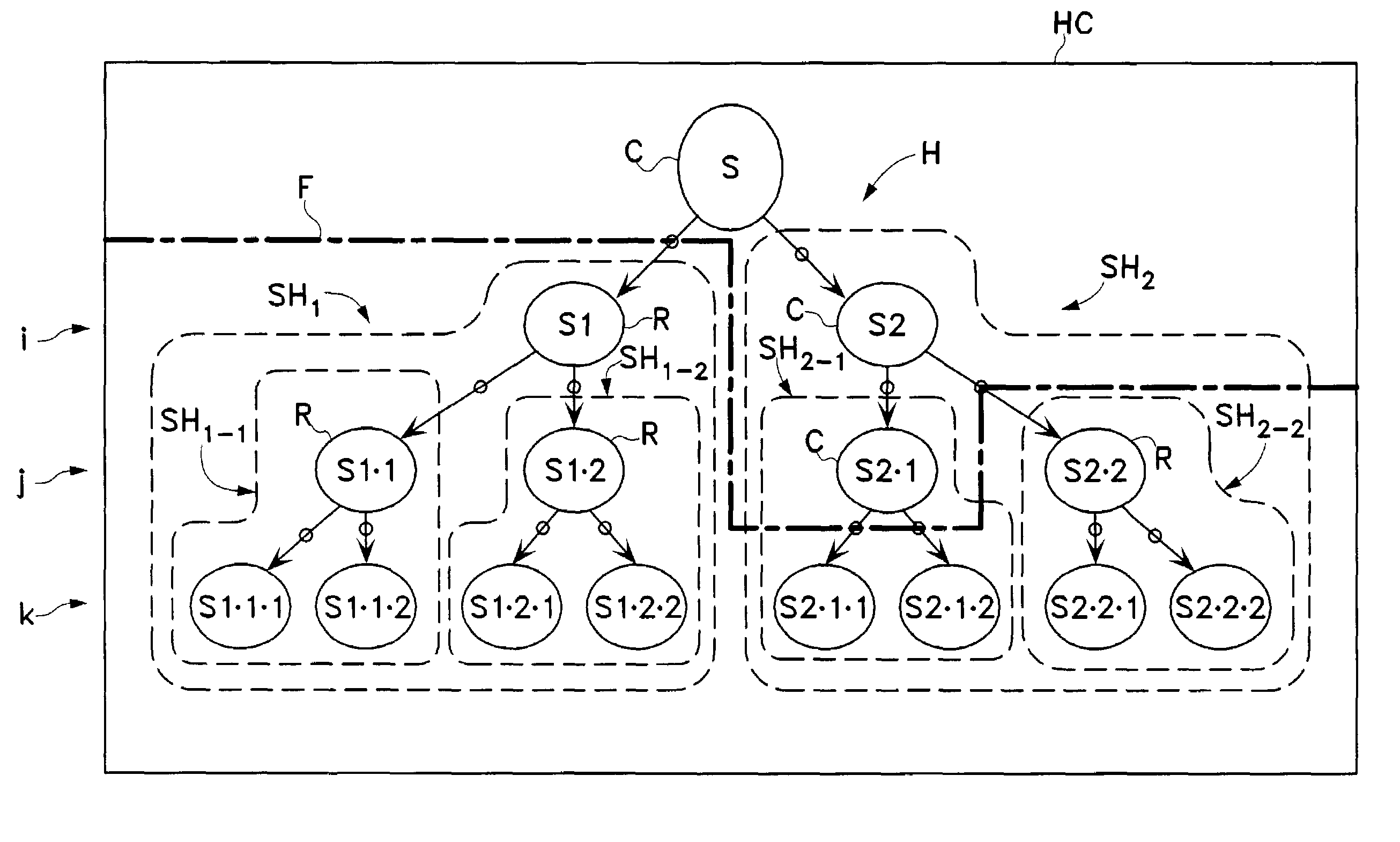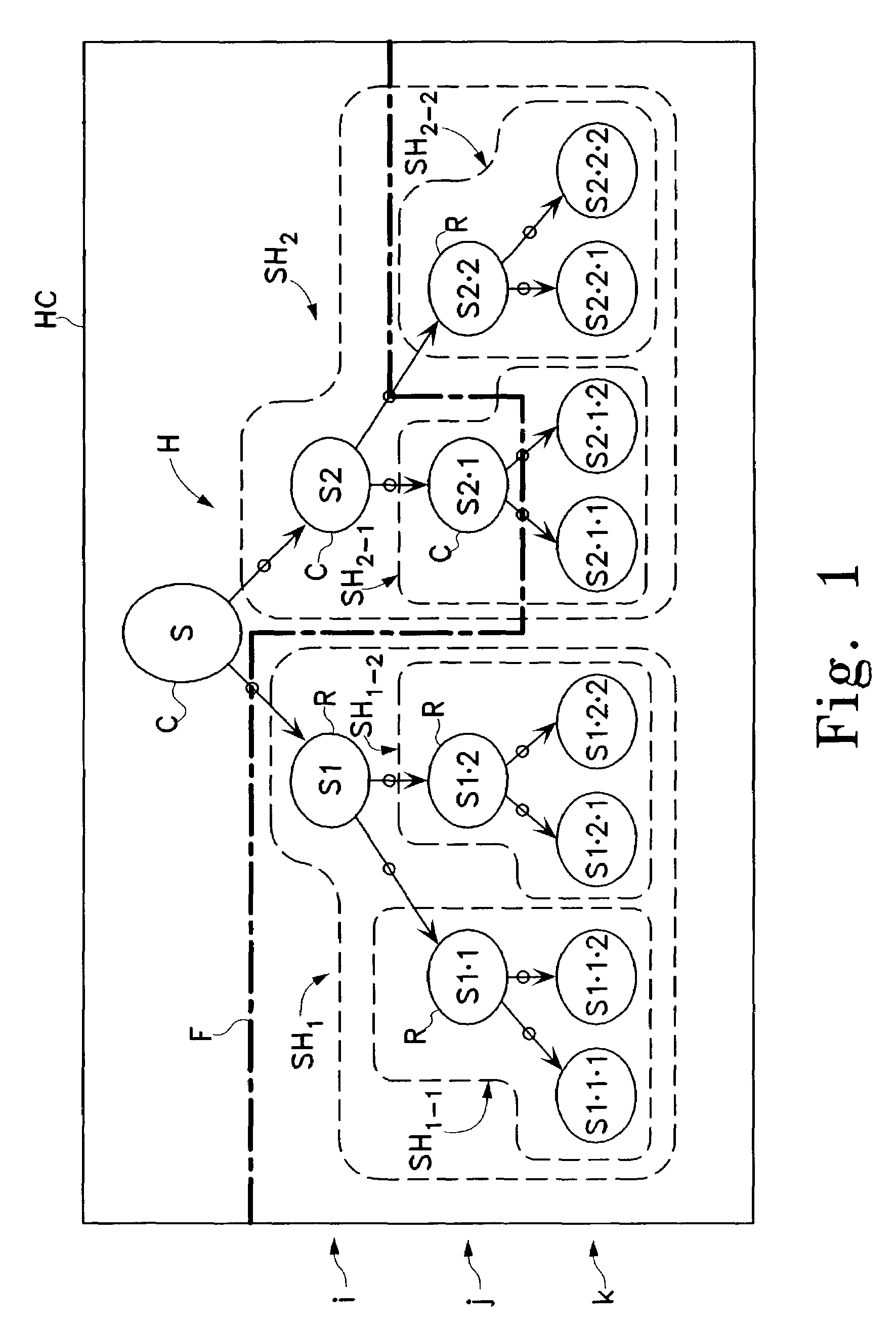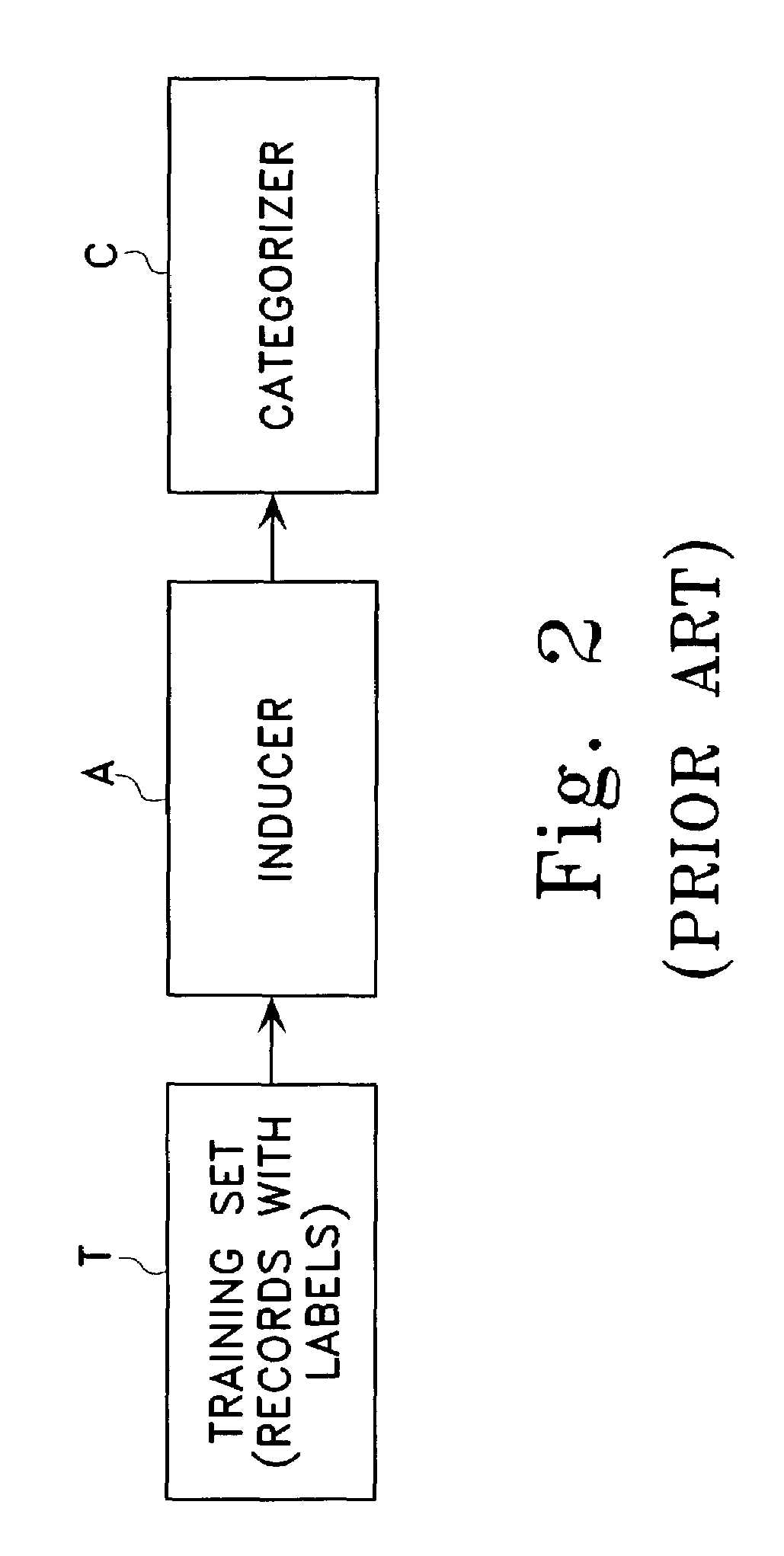Hierarchical categorization method and system with automatic local selection of classifiers
a classification method and classification system technology, applied in the field of classification methods and classification systems with automatic local selection of classifiers, can solve the problems of requiring a significant amount of training data, posing a degree of confidence, and usually costing a lot of human labeling effort to gather the training s
- Summary
- Abstract
- Description
- Claims
- Application Information
AI Technical Summary
Benefits of technology
Problems solved by technology
Method used
Image
Examples
Embodiment Construction
[0024]Reference should now be made to FIG. 1 of the attached Drawings, which represents an arbitrary hierarchical categorization problem H having 3 levels (i,j,k) of categories (labels) and a total of 8 subcategories (Si.j.k) at the third level, with each category at each of the upper levels branching in binary fashion into two subcategories at the next level.
[0025]Although as shown, each upper level node (S, Si, Si.j) has exactly two branches, and each of the eight bottom nodes Si.j.k is separated from the top node S by exactly two intermediate nodes (Si, Si.j), it should be understood that many of the principles of the present invention are equally applicable to more complex hierarchical structures, with more than three levels, with not all of the bottom nodes at the same level, and / or with more than two branches from one or more of the upper nodes. Using the previously mentioned example of books in a library, the two nodes in the first (i) level S1, S2 could represent fiction and...
PUM
 Login to View More
Login to View More Abstract
Description
Claims
Application Information
 Login to View More
Login to View More - R&D
- Intellectual Property
- Life Sciences
- Materials
- Tech Scout
- Unparalleled Data Quality
- Higher Quality Content
- 60% Fewer Hallucinations
Browse by: Latest US Patents, China's latest patents, Technical Efficacy Thesaurus, Application Domain, Technology Topic, Popular Technical Reports.
© 2025 PatSnap. All rights reserved.Legal|Privacy policy|Modern Slavery Act Transparency Statement|Sitemap|About US| Contact US: help@patsnap.com



